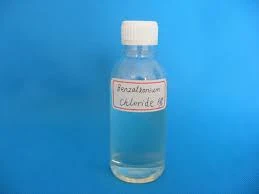Formation and Properties of Polyacrylamide Gels in Various Applications
The Formation of Polyacrylamide Synthesis, Properties, and Applications
Polyacrylamide (PAM) is a versatile polymer formed through the polymerization of acrylamide monomers. Recognized for its unique properties, polyacrylamide has found widespread applications across various fields, including water treatment, soil conditioning, and bioengineering. This article will delve into the intricacies of polyacrylamide formation, exploring its synthesis, characteristics, and uses.
Synthesis of Polyacrylamide
The formation of polyacrylamide generally begins with the polymerization of acrylamide, a water-soluble monomer. Two primary methods are utilized for polymerization free radical polymerization and anionic polymerization. Free radical polymerization is the most common method, wherein a free radical initiator such as potassium persulfate decomposes to generate radicals that initiate the polymerization process.
This method allows for the control of molecular weight and distribution by adjusting factors such as temperature, concentration of acrylamide, and the type of initiator. The polymerization reaction typically occurs in an aqueous medium under controlled temperatures to ensure optimal formation of the polymer and minimize side reactions.
It is crucial to note that acrylamide is a neurotoxin and a possible carcinogen; hence, proper safety measures should be taken during the polymerization process. The reaction produces polyacrylamide chains which can vary in length depending on the conditions set during synthesis. The resulting polyacrylamide can be further modified to create various copolymers by introducing other monomers, providing even broader functionality.
Properties of Polyacrylamide
Polyacrylamide exhibits outstanding properties that make it suitable for numerous applications. Its high molecular weight contributes to its thickening capabilities, making it an excellent choice for products requiring increased viscosity. One of the remarkable features of polyacrylamide is its ability to form gels, making it ideal for applications in areas such as electrophoresis.
polyacrylamide formation

Furthermore, polyacrylamide is hydrophilic due to the presence of amide groups (-CONH2) along the polymer chain, allowing it to dissolve readily in water. This property is beneficial for its use in various aqueous solutions, providing enhanced performance for applications including flocculation and sedimentation in water treatment processes.
In addition, polyacrylamide can be cross-linked to form hydrogels by utilizing bi-functional monomers or cross-linkers. These hydrogels offer significant water absorption and retention capabilities, making them useful in agriculture for soil conditioning, water conservation, and as a carrier for fertilizers.
Applications and Uses
The diverse properties of polyacrylamide open doors to a myriad of applications. In water treatment, it acts as a flocculant, helping to remove suspended particles from wastewater and clarifying drinking water. Its gel-forming ability is exploited in polyacrylamide gels for laboratory techniques like electrophoresis, where it separates biomolecules based on size.
In agricultural applications, polyacrylamide is used to improve soil structure, reduce erosion, and retain moisture, particularly in arid regions. This usage enhances crop yields and contributes to sustainable farming practices. Additionally, in the field of biomedicine, polyacrylamide hydrogels are utilized for drug delivery systems, tissue engineering, and wound healing due to their biocompatibility and ability to mimic biological tissues.
Conclusion
The formation of polyacrylamide through the polymerization of acrylamide is a significant advancement in polymer chemistry, leading to various applications that benefit multiple industries. Its unique properties, ease of synthesis, and versatility continue to drive research and development efforts aimed at expanding its applications. As we advance into the future, polyacrylamide will undoubtedly play a crucial role in addressing environmental challenges, enhancing agricultural productivity, and contributing to medical innovations.
-
Water Treatment with Flocculant Water TreatmentNewsJun.12,2025
-
Polymaleic AnhydrideNewsJun.12,2025
-
Polyaspartic AcidNewsJun.12,2025
-
Enhance Industrial Processes with IsothiazolinonesNewsJun.12,2025
-
Enhance Industrial Processes with PBTCA SolutionsNewsJun.12,2025
-
Dodecyldimethylbenzylammonium Chloride SolutionsNewsJun.12,2025





